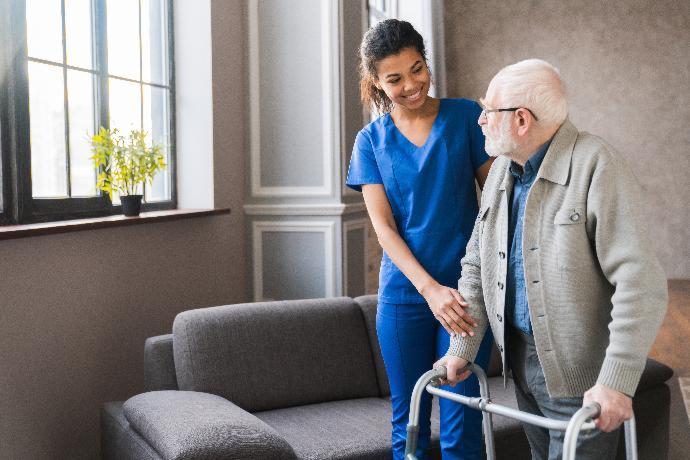Tips for Making Transfers and Mobilisations of the Elderly
With time, providing our elderly loved ones with the care they require becomes more complex. Motor, functional or mental limitations deteriorate with age and causes an everyday challenge for those looking after these dependants. Normal aspects of living such as day to day cleaning, handling in bed or moving from room to room can turn into a risk for both the elderly and their handler if the suitable methods are not used. To deal with these mobility issues, focusing on motor skills development as well as motor skills exercises can help. Other elderly mobility aids improve mobility for the elderly.
Why is Learning to Move Older People so Important?
Caring for a dependant person needs training, know-how and commitment

Types of Mobilisation and Advice for its Execution
Types of Mobilisation and Advice for its Execution
The basic rules in performing postural variations, transfer practices, and postural ergonomics encompass to all day-to-day activities. From first thing when the sun rises till it sets late in the evening, a set of practises take place that guarantees the successful accomplishment of daily tasks.
These common manoeuvres in the mobilisation and transfer of the aged can be categorised into three large sets:
Mobilisations of the elderly in the room:
How to assist elderly with walking
To wake up from the bed
To take a seat on the bed
To move around the bed
Elderly mobilisations in the bathroom:
To wash themselves
To shower
To use the toilet
Elderly mobilisations anywhere:
To take a seat
To arise from a chair
To rise up from the ground after falling down
To entering and exiting a motor-vehicle
Except in those circumstances in which the motor abilities of the dependant individual are very inadequate, the mobilisation method most used in any of these situations is manual mobilisation. It is known by this name to the set of manoeuvres in which no extra tool is used for the postural administration of the person apart from the hands, arms and the caregiver's own body.
What Causes Mobility Problems in the Elderly?
A Common issue includes ageing which leads to low physical activities. Obesity and reduced strength and balance impairs mobility in the elderly. Additional factors include weak muscles, joint weaknesses, fatigue, body pain and neurological issues can all cause mobility problems.
Elderly mobility issues can be aided through social connection and performing a combination of several activities. This can include partaking in communal issues.
Manual mobilisation practices vary relying on the form of objective used. Nonetheless, from a universal point of view where features common to all of them can be identified.
The risks of a poorly executed mobilisation and how to avoid them to improve mobility for elderly. Difficulties are present, but they can be overcome. When performing these movements, it is common for caregivers to suffer back injuries. Injuries that require a long time to recover and render them unable to continue to perform such an important role in caring for the elderly. Among the main risk factors that caregivers face are:
Lack of motivation or passivity of the person to be mobilised.
An excess in the workload can affect their capacity of effort and concentration.
A biomechanical overload that triggers the adoption of inappropriate postures.
5 Practises in Mobilisation and Transfer
Learning to care is learning to move. Within the set of ergonomic measures that all the manuals on good practises in the mobilisation and transfer of older people contemplate, there are five fundamental postural principles:
Spread your feet and slightly bend your knees to ensure a balanced and stable position.
Keep your back straight and use arm and leg strength to lift weight instead of straining your spine.
Position the elbows as close to the trunk as possible at the moment of mobilisation to keep the weight close to the body.
Avoid back turns when carrying the patient's weight. The back should not turn, the feet should.
Look for supports that increase the ability to exert force when moving the patient, for example, placing the knee on the bed to lift.
Hire the best Live-in carer






